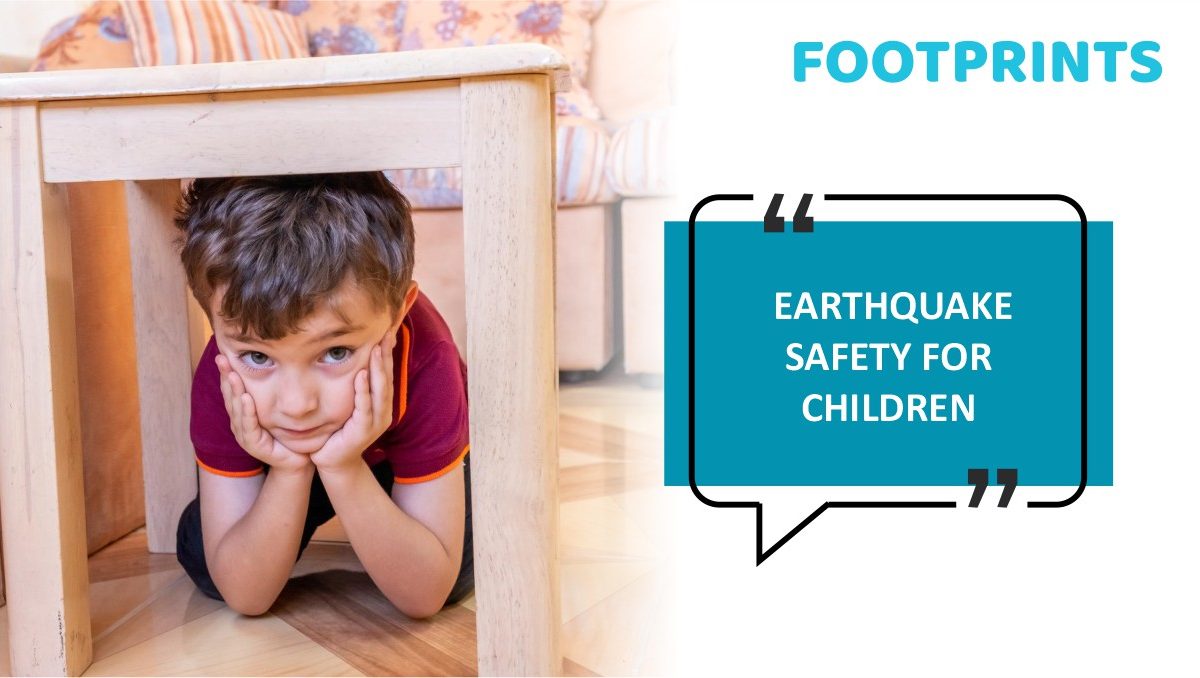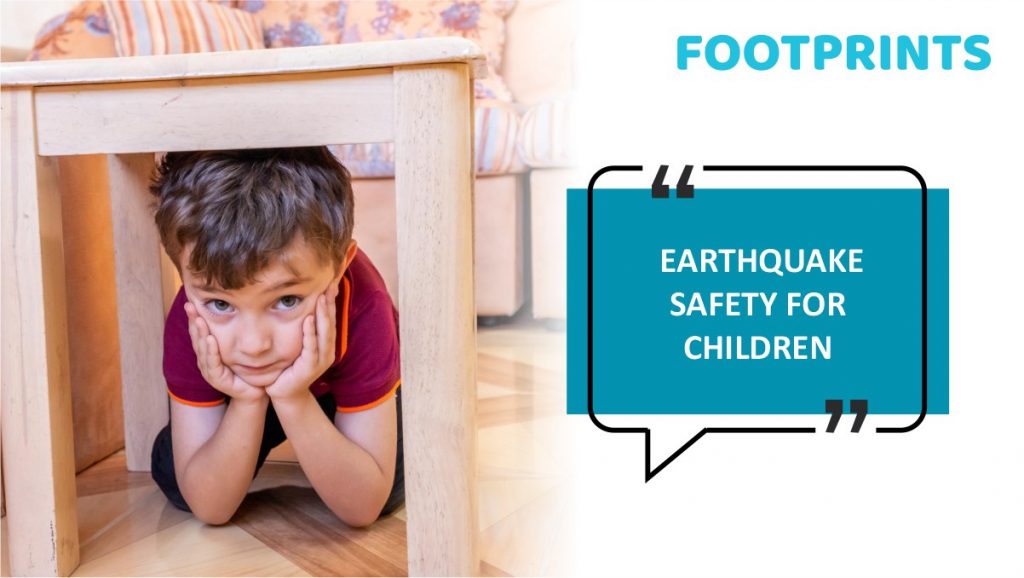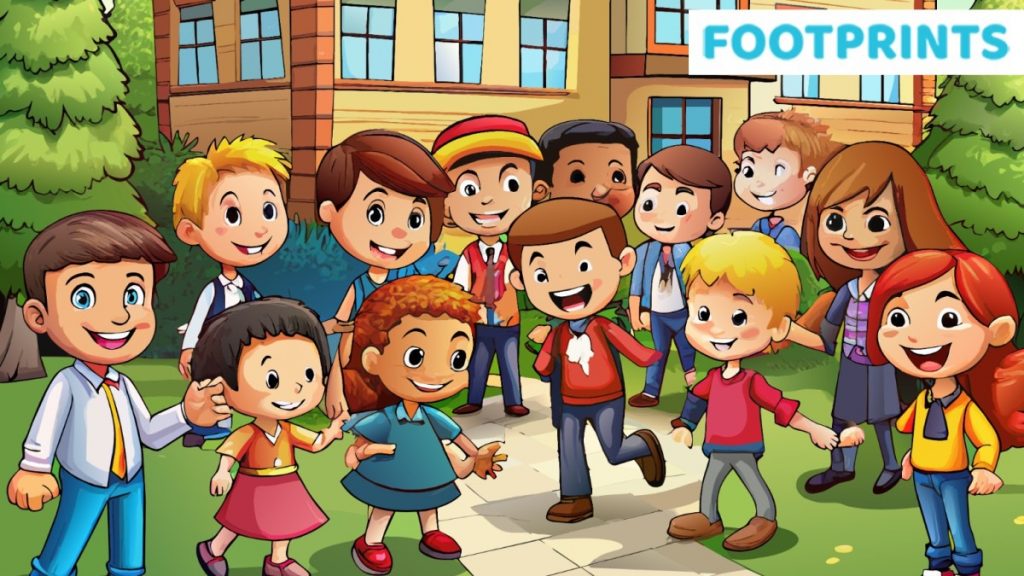

Unfortunate natural incidents happen, and they can happen anytime. There’s no fixed time or prevention warning that can be given to you for that, and this is the reason why it is necessary to be prepared for every natural calamity. While there are many different natural disasters for which we must prepare our children, protection against earthquakes comes first. For those who are unaware, earthquakes are caused by the shifting of plates beneath the earth’s surface. It is one of the most commonly occurring natural disasters. Hence, it becomes necessary for teachers and parents to have all the information about earthquake safety that can be taught to the children for their safety. Moreover, as earthquakes can happen any time of the day, educational centers or preschools also need to be prepared for the same and should know all the ways to offer children protection against earthquakes.
Important Earthquake Safety Tips for Children:
1. Give Your Child All the Information About Earthquake
When it comes to protecting your child from any disaster at first, keep them informed about it. If your child does not know what an earthquake is then how will he/she be able to do something when it happens? So, describe to them how and why earthquakes happen and how it is something completely natural with no one to blame. Explain everything in simple and easy-to-understand language. You can together plan a safety map with all the dos and don’ts during an earthquake and make them memorize it. You must teach them that the focus during an earthquake is to keep themselves safe.
2. Find Safe Spots in Schools & Home
As we said earlier also, earthquakes can happen anytime. Sometimes it can occur when your child is playing at home or sometimes maybe when they are studying at preschool. So, it’s a responsibility for both teachers and parents to tell children about the safe spots where they can go to protect themselves against this natural disaster. Post identifying the safe spots, make your children aware of them and tell them to go there immediately if they feel an earthquake is coming. Those safe spots can be anywhere like a closet, an interior room without a window, or simply an enclosed bathroom. If nothing else, then even a school desk or sturdy table will work well.

3. Ask Children to Avoid Lift
As the world around us has advanced, we let our children use modern technology in everyday life, too. But sometimes, they can be life-threatening, too. Make your children aware that they should avoid using lifts or elevators at any cost when an earthquake happens. Instead of that, children should go for the stairs or the emergency fire exits. Lifts and elevators can be dangerous during these times because they can get stuck, or there is a high chance of malfunctioning in the technical systems during natural disaster times. So, it’s better to keep children away from the lifts or ask them to avoid them on regular days as well. It will also keep them healthy in the longer term.
4. Practice Earthquake Drills
Another important addition to the list of earthquake safety tips is practicing earthquake drills. While many schools and educational institutions are already working on it some still do not take it seriously. Once the child is pretty much aware of what an earthquake is, and what are the different safety spots they can go to, it’s time to test their understanding with earthquake drills. These mock drills will help children understand how to implement safety tips that have been taught to them when the situation comes up. This is not the responsibility of schools only. Parents can also conduct earthquake drills at home to check whether their children can protect themselves in their absence during an earthquake or not.

5. Tell Them the Concept of DCH (Drop, Cover, Hold On)
One of the easiest ways to teach children about the most important safety measures for earthquakes is by the DCH concept. The DCH concept stands on three main points: drop, cover, and hold. Children should learn that when they are inside, they must first drop to the ground, cover themselves under something sturdy like a table or desk, and then hold on to that object. This is the first thing they should be doing when they encounter an earthquake. They must hold on and stay indoors until the whole shaking stops and then find a safe exit. If they are outside, ask them to find a clear spot away from buildings, trees, and power lines and follow the same DCH concept until the shaking stops.
6. Keep Contact Information Up to Date
Another important way to protect your child from this natural disaster is to keep all their information updated. With information, we mean their contact information like phone numbers, relationships, and addresses. If children are at school, then teachers must have their parents’ or guardians’ emergency contact information. On the other hand, parents should also have their teacher’s contact information, school contact information, and everything else. This way, you can stay updated with all the emergency release information, and when something like an earthquake happens, you will be pretty much updated about your child’s location to pick them up as early as you can.
7. Listen Out to Children
Now that you have taught the children what to do during an earthquake. It’s time to help them learn what they can do after it. Both teachers and parents should involve children in the clean-up activities because it will be comforting for them to see things going back to normalcy. In addition to that, parents must listen to their children. Let them express their feelings of anxiety, fear, or anger. Listening to them reassures them that things will get back to normal and that this isn’t going to last anymore. Schools should also organize mental health workshops to let children express themselves and come out from the fear of that accident. This will make children stronger and help them tackle further calamities that may come.
To Sum Up
In conclusion, we can say that these are the most important earthquake safety tips that should be taught to children from an early age. The rules can also be taught at preschool. These are the tips that should be added to the teaching curriculum of preschoolers as well. We all know that we cannot always be present with our children and at some point, in time, they will need to handle whatever arises on the way.
Natural disasters like earthquakes are one such situation, and you don’t want your child to get stuck in these dangerous times. So, whether you are reading this blog as a parent or a teacher, it’s high time to let the little ones learn these safety tips to be safe during an earthquake. Always remember that earthquakes can be unpredictable, but being prepared doesn’t have to be. Let’s work together as a team to create a safer environment for our children. With these simple yet effective tips, you can empower your child’s safety no matter where they are.
Stay tuned to this space for more informative articles. At Footprints Preschool, one of India’s largest chains of play schools and creches, our focus is on children’s holistic development.
Aditya brings over ten years of expertise as a Senior Marketing Strategist. He’s an expert at developing captivating marketing tactics that regularly provide excellent outcomes. His innovative strategies have demonstrated a track record of increasing organizational reach and engagement, showcasing his extensive knowledge of the contemporary marketing landscape.

